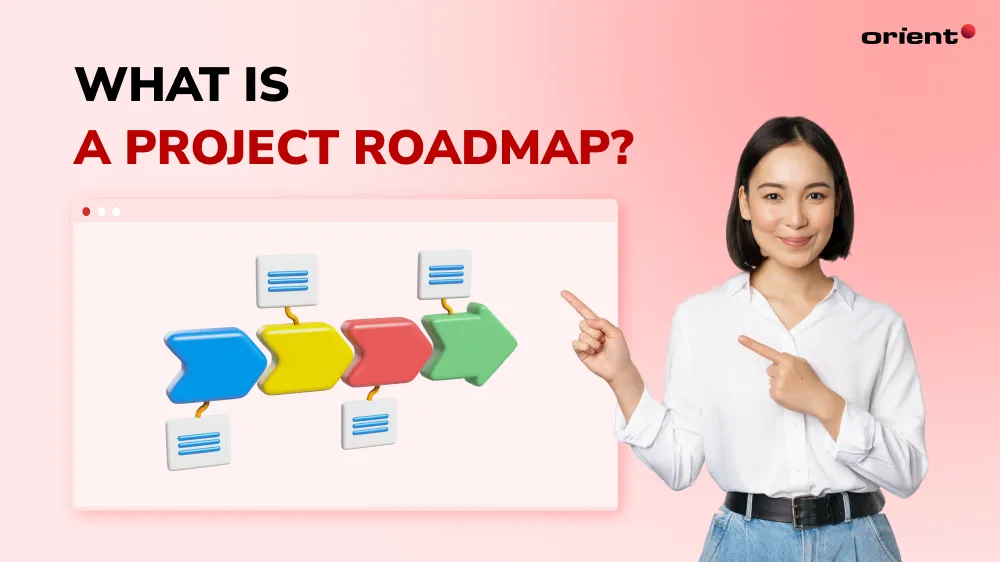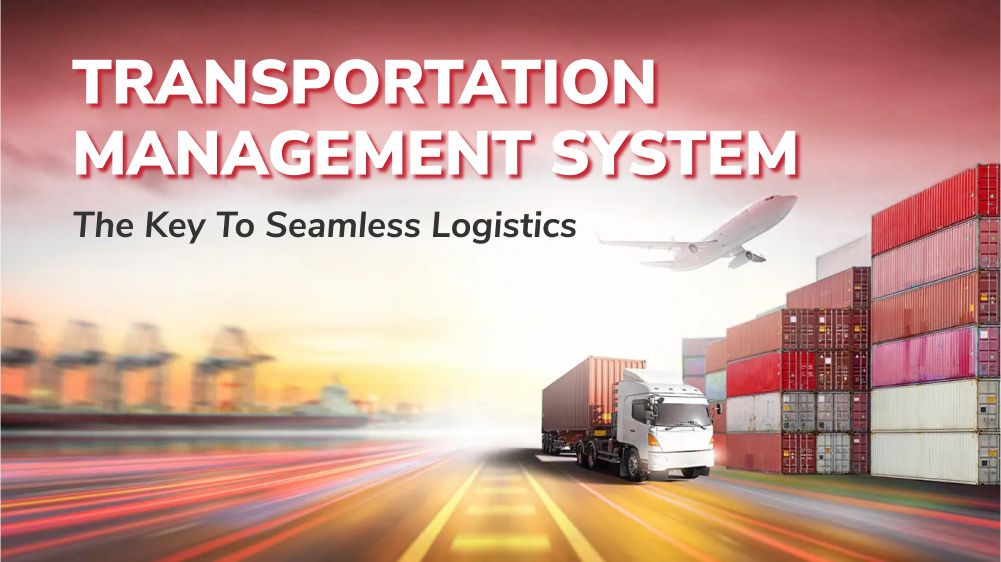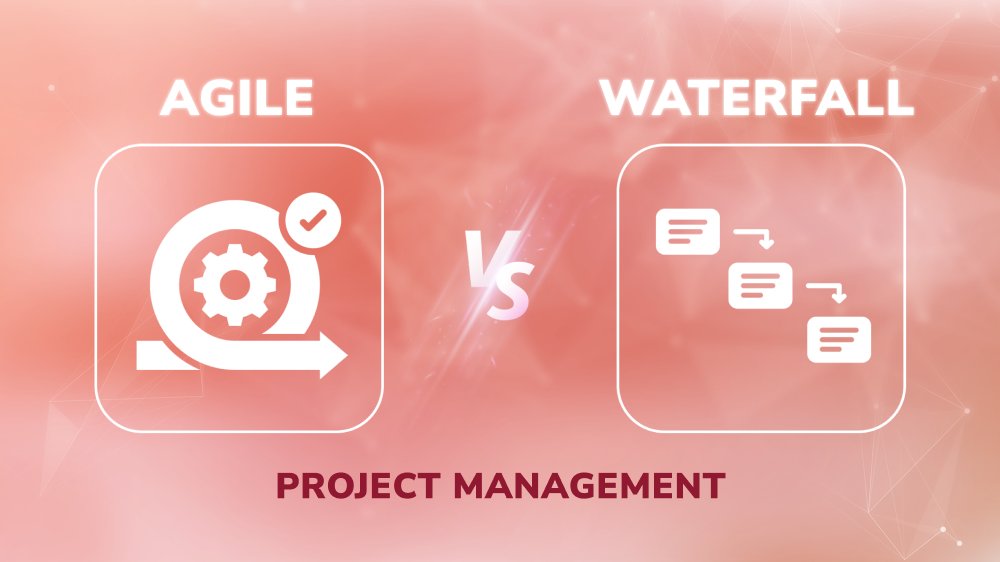What Is a Project Roadmap? Essential Tool to Navigate Projects Effectively

Content Map
More chaptersDid you know that 92% of organizations that employ project management techniques succeed in achieving their goals? Project management is a broad concept that comes with a variety of methods, steps, practices, and documentation (this is probably the least favorite part of most project managers).
Despite the mixed feelings toward the documentation process, it plays a role in determining a project’s success. Today’s article will dig deep into one such document – project roadmaps. Discover what it is, why it matters, why it can be mixed up with other documents sometimes, and how you can create a winning project roadmap for your own team.
Key Takeaways:
- A project roadmap is a high-level document providing a bigger picture of the project’s goals, milestones, and deliverables.
- Project roadmaps play a crucial role in streamlining a project’s task flow and goal alignment.
- Lots of preparation goes into creating a project roadmap to ensure the project doesn’t encounter any unwanted bottlenecks or delays.
- To gain an advantage right from the early stages of your project management project, it’s best to utilize outsourcing services.
What Is a Project Roadmap?

A project roadmap is a strategic, high-level visual tool that outlines key project objectives, milestones, deliverables, and timelines. It provides an overview of the project’s goals and progress, serving as a stakeholder guide and communication tool.
Project roadmaps are dynamic and adaptable. They evolve as the project progresses and typically include phases, resource allocation, and task dependencies, often visualized using tools like Gantt charts.
Elements of A Project Roadmap

Every organization’s project roadmaps are different. However, there are some basic elements included in every project roadmap.
- Project Goals: The key objectives and desired outcome of the project.
- Major milestones: This is an indication of progress, key points and events of a project’s timeline, e.g. completing project phases or key results.
- Project deliverables: Deliverables identify the primary outcomes, serving as tangible project markets feeding into the project milestones.
- Project timeline: Often a visual presentation showing when each milestone or deliverable is expected to be met.
- Dependencies: This element demonstrates the relationship between milestones and deliverables, indicating how one factor relies on the other.
- Risks: Technical difficulties and budget overruns are two examples of the potential obstacles a project might encounter.
- Resources: Resources refer to everything needed to execute the project. This includes key personnel, budget allocation, finances, and equipment.
Why Do Project Roadmaps Matter?

A lot of work goes into crafting project roadmaps. This often raises the question, “Can we skip this step and just get straight to the development processes?”
While you can skip it, here are a few reasons that you should invest serious time and resources into drafting a detailed project roadmap.
Clarity
The first reason is project plan clarity. Multiple teams work on a project, so organizations need to ensure that all the relevant project stakeholders are on the same page. Everyone should be clear about their roles, the expectations, high-level goals, and milestones.
Effective Planning and Strategy
Documents play a major role in project management. A well-crafted roadmap moves the project forward smoothly. Despite changes in the day-to-day realities (which almost always happens in software development projects), project roadmaps serve as the beacon of light that guides and constantly reminds key stakeholders of the main goal. Tasks will be reorganized and prioritized to make sure the milestones in the roadmap are reached.
Identify Risks Early
Mapping out the project lifecycle early helps project managers identify and spot problems relating to resources or budget, as well as possible delays or dependencies early on.
Room For Agility Change
Project roadmaps aren’t meant to be static. It is a living document, and the team might change priorities. The project roadmap serves as the groundwork for all decision-making. It serves as a guiding light, making sure everyone’s constantly moving toward the goal.
Accountability and Transparency
A project roadmap has many roles: It connects the goals to the activities needed to meet the intended goal. Each and every team member is aware of their role in the project and works to contribute to the project’s success accordingly.
Clarifying Confusing Terms in The Project Management World
A software development project admittedly comes with numerous documents. While they are all crucial, it can get confusing at times. To craft the best possible project roadmap, one needs to have the ability to differentiate it with similar terms like product roadmap or project plan in a professional setting.
Project Roadmap Vs. Product Roadmap
| Product Roadmap | Project Roadmap | |
|---|---|---|
| Definition | Outlines the product strategy, vision, development stages, and prioritization of features and enhancements | Focuses on milestones, timelines, and major deliverables for an entire project (not limited to products) |
| Purpose | Guiding the product team | Guiding the project team |
| Scope | Product lifecycle management: features, market needs, enhancements, etc. | The entire project scope |
| Managed by | The product team: product managers, engineers and other relevant stakeholders | The project managers and numerous other teams involved |
| Focus | Product-specific features | Project progress |
| Use cases | Product launches, feature development, product improvements | IT software development projects, or any other type of project |
| Outcome | Clear product development plan | A clear path for project completion with key milestones |
Project Roadmap Vs. Project Plan
| Project Roadmap | Project Plan | |
|---|---|---|
| Definition | Provides a strategic overview with milestones, key activities, and high-level goals | A detailed document outlining specific tasks, timelines, resources, and dependencies for execution |
| Purpose | Overall direction and high-level vision | Breaks-down project into smaller, actionable steps |
| Focus | Big picture goals, key milestones, and overall project schedule | Day-to-day tasks and management, deadlines, resources, and dependencies |
| Level of detail | Broad overview | Exact details of what needs to be done by who and by when |
| Use Cases | Communicating the project’s strategic goal | A clear step-by-step guide on how to achieve the goals |
| Level of complexity | Simple and concise | More complex as there are numerous specifics |
Creating Effective Project Roadmaps: Step-By-Step Guide

As we’ve mentioned earlier, project roadmaps are living documents. They constantly evolve and are updated as time goes by. If done right, the project roadmap will help you streamline the process significantly. Here are the basic steps to create a project roadmap that every manager needs to know in the palm of their hand.
Create a Project Schedule
How are you supposed to track progress efficiently without a clear schedule? Start by establishing the start date and end date of the project. These dates will help you identify a clear timeline of project phases and determine if this is a realistic timeframe.
We suggest using a visual representation for this step to ensure everyone has a clear understanding of the project timelines. Gantt chart or similar project management software tools are a great way to start.
Select Deliverables and Milestones
The next step is to break down the objective into smaller milestones and deliverables. Deliverables refer to the tangible outcomes of the project that will be produced during the project, and milestones refer to important checkpoints in the project. Although you won’t need to go into details regarding how each step should be executed, like in project planning, it would still be a good idea to be specific.
Link Task Dependencies
The next step is to think about task dependencies. Simply put, this refers to how one task needs to be done before another task starts.
To optimize the task flow, the whole team needs to sit down and review the most logical task sequence by prioritizing and validating prerequisite tasks. Having clarity regarding this aspect ensures the tasks and timeline flow smoothly, and no bottlenecks occur.
Identify Potential Risks
A project roadmap acts as the bigger picture, so it helps to identify the risks early on. This ensures the project stays on the right track, stays within budget, and meets the goal within the intended timeframe. Taking a proactive rather than a reactive approach minimizes problems that can potentially derail the project.
Loop Project Stakeholders
Remember to loop all the key stakeholders into the final step to gather everyone’s support. Present everything you’ve researched and planned so far: The timeline, milestones and deliverables, dependencies and risks.
Not only will this step align stakeholder expectations with the project’s goals, but you’ll also be able to gather feedback and valuable input.
Level Up Your Project Management Game with Orient Software
Did you know that you don’t have to manage a project all on your own? That’s right; there are dedicated, experienced software teams that are eager to play a part in your business’s growth. Gone are the days of shouldering the entire software development process alone.
Having a team of seasoned experts like Orient Software’s dedicated software team on your side already gives you a strong head start compared to other competitors in the market. Why not take this advantage and let the experts do all the leg work? After all, the most typical activity that project managers want to eliminate from their workload is documentation.
Outsourcing has always been the go-to development method for successful companies, and you can join and become one of the giants, too. Contact Orient Software today!







